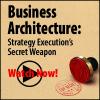Strategic advice to leverage new technologies
Technology is at the heart of nearly every enterprise, enabling new business models and strategies, and serving as the catalyst to industry convergence. Leveraging the right technology can improve business outcomes, providing intelligence and insights that help you make more informed and accurate decisions. From finding patterns in data through data science, to curating relevant insights with data analytics, to the predictive abilities and innumerable applications of AI, to solving challenging business problems with ML, NLP, and knowledge graphs, technology has brought decision-making to a more intelligent level. Keep pace with the technology trends, opportunities, applications, and real-world use cases that will move your organization closer to its transformation and business goals.
Insight
Many aspects of software have changed in the last few decades, particularly since the advent of personal computers in the 1980s, the World Wide Web in the 1990s, and the widespread use of mobile and cloud computing in the last decade or so. Other key changes have been the massive trend toward outsourcing and offshoring in the 2000s and the widespread use of social media beginning in the 2010s. We explore some of these trends in this Advisor.
Recently, we described the application of Scrum at Riccardo’s Restaurant in London. This environment is similar to that of Lean hardware Scrum, in that shifts are repeatedly creating and delivering products in short cycles with high quality. Process efficiency and cycle time become the key metrics for production.
Digital transformation has hit a wall. The need for reinventing how we think about and approach architecture is becoming ever more prevalent, especially if an organization is to truly become Agile.
Aligning strategic objectives and tactical demands is critical to successfully execute your strategy and drive change. Cutter Consortium Senior Consultant Brian Cameron explores the ways you can structure your business architecture to effectively facilitate strategy execution in this on-demand webinar. (Not a member? For a limited time, you can watch the webinar on demand.)
All About Agile Integration and Testing
Many Agile experts have written about integration and testing. Some debate about the goals, while others explore the tactics taken to achieve them. Most agree that integration and testing should be performed continuously and in an automated manner, if possible. However, this seems to be the extent of agreement. Debate arises over “who does the integration and testing — when, where, and why?” along with discussion about the most efficient and effective way to get the job done.
In this edition of The Cutter Edge, you'll explore a multi-pronged approach to creating a strategic incident response plan focusing on continuous process improvement, learn what a team has to do to span the gap between its work and the customer market, and more!
It’s clear that organizations are going to have to extend their enterprise data protection practices to be more transparent and flexible if they hope to comply with the various (changing) requirements of data protection and privacy legislation.
Here in Part VIII, we discuss the social and emotional cognitive aspects of projects.




















